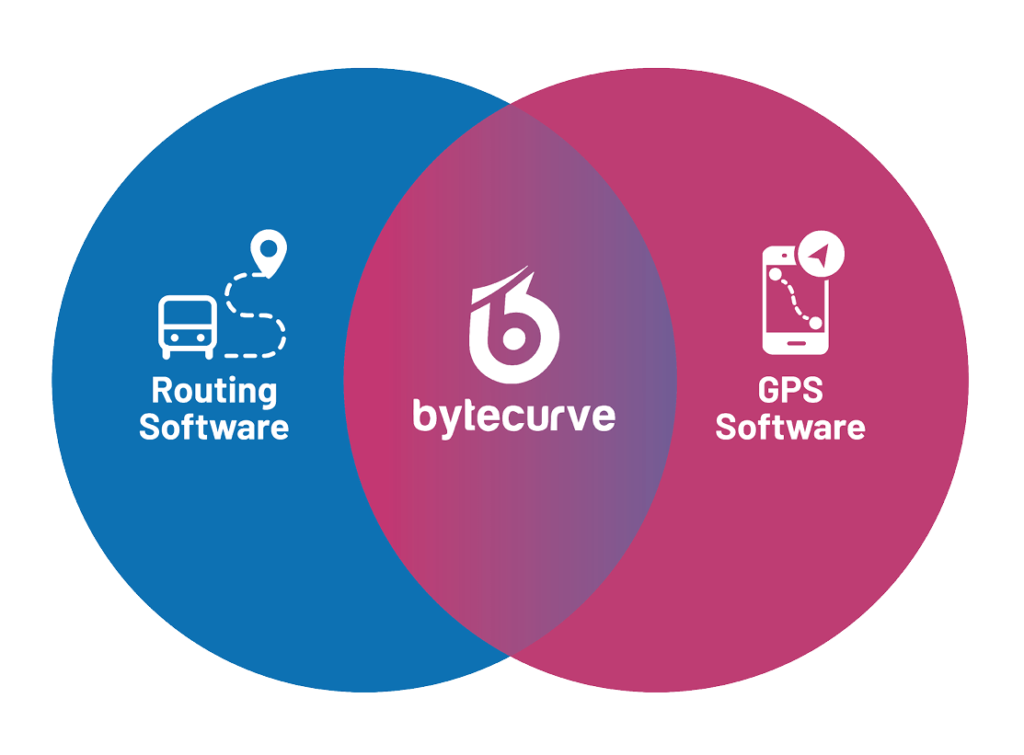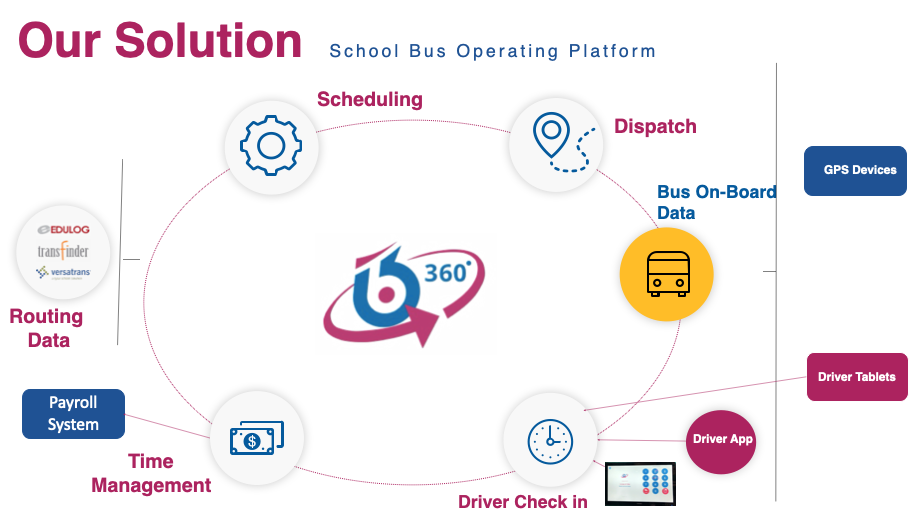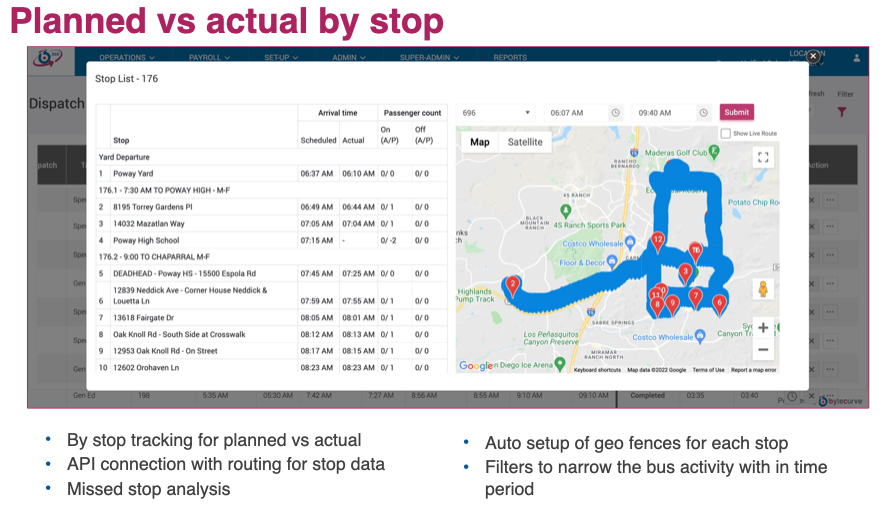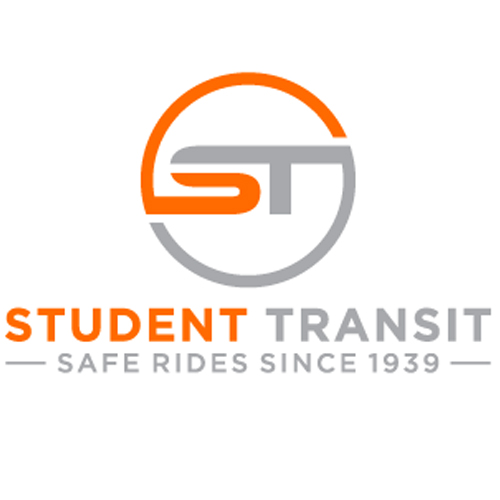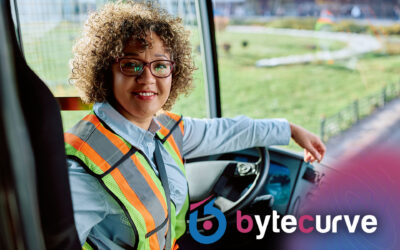BYTECURVE RESOURCES
Three-Tiered School Start Times: Staggered Bells Stress Parents, Students and Drivers Alike
Our School Bus Operating platform arms your team with the information they need to improve decision making around safety, reducing costs, and being more efficient each day.
Trusted by dozens of public and private student transportation fleets to improve how they do business.
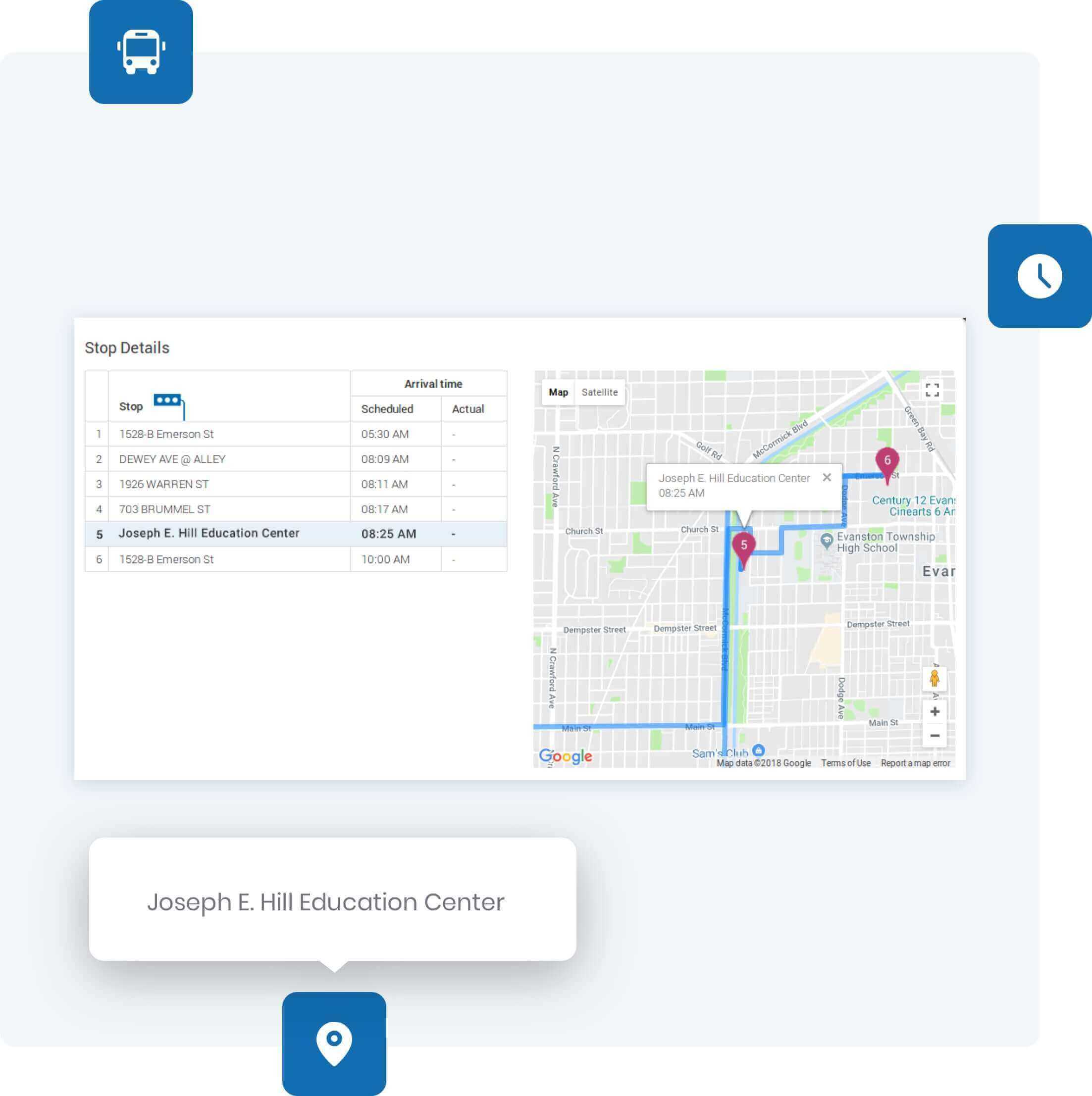
Trusted by the Finest Names in School Bus Transportation
Three-Tiered School Start Times:
Managing Bus Driver Shortage with Staggered Bells Stresses Parents, Students and Drivers Alike
What time does school start in the morning?
In a growing number of school districts across the United States, that question is becoming a bit more complex.
Nationwide school bus driver shortages are forcing school districts to get creative in order to get students to school on time.
The three-tiered system of start times, in which schools across a district stagger morning bells between 7, 8 and 9 a.m., is a Band-Aid being applied to the chronic school bus driver shortage.
The shortage was already chronic prior to the COVID-19 pandemic has become even more severe in many districts where older drives who stepped aside during the pandemic often didn’t return to driving, or took roles outside of student transportation.
While this short-term solution may help ensure that children get to school in a timely manner, it is also stressing out already-frazzled drivers.
Shelby Langley, a bus driver for the Harlem School District in Rockford, Ill., told local NBC affiliate WREX-TV (Ch. 13) that “school bus driving is one of the most stressful jobs in the United States.”
Langley thinks three-tiered start times, which are intended to relieve some of that stress, could have the opposite effect:
“We’re not going to be able to take a break,” Langley said.
The Lafayette (Ind.) School Corporation (LSC), likewise, is moving to a three-tiered system for school start times as a direct response to the driver shortage.
Secondary schools will operate from 7:40 a.m.-2:45 p..m.; elementary schools will be in session from 8:30 a.m.-3:25 p.m.; and the middle school will be open from 9:05-4:05 p.m.
LSC superintendent Les Huddle told local CBS affiliate WLFI-TV (Ch. 8) that student safety concerns informed the change to a three-tiered system.
“Right now, with our two-tier system and lack of bus drivers, we’re having literally up to 200 students not picked up on time or being dropped off early so the bus can go around and get other students,” Huddle told the station.
But three-tiered bell times have met strong resistance in some areas.
In 2022, Seattle parents rallied against a proposal to move to such a system. They argued that bell times as early as 7:30 a.m. would “be an impediment to their ability to get to work, to get students to before and after school programs, and could have potentially devastating effects on child care programs,” according to The Urbanist.
Over 50 percent of U.S. schoolchildren ride in some 500,000 school buses to and from school every day. Nationwide, school buses are widely considered the most used form of public transportation, but driver shortages are driving managers and leaders to take drastic measures to keep the buses rolling.
Administrators have been forced to consider changes in the wake of a driver shortage that shows few signs of abating.
“School bus driver employment continues to be far below pre-pandemic levels,”
reported the National Education Association, citing research by the Economic Policy Institute.
“There were approximately 192,400 bus drivers working in K–12 schools in September 2023, down 15.1% from September 2019.”
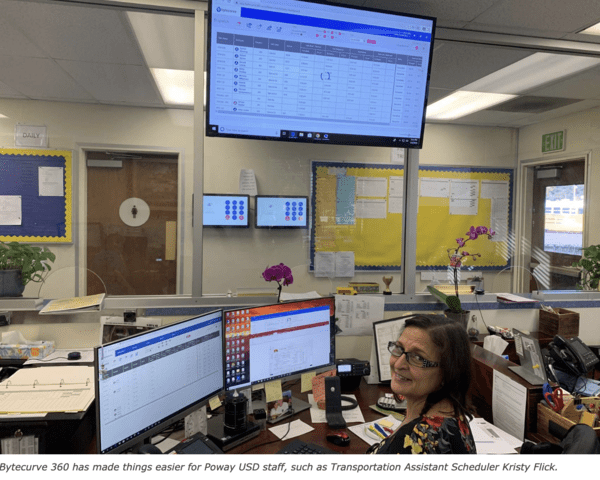
Bytecurve360 delivers a transformative operational experience.
Some of the most essential features include:
- Better Driver communications so that employees can check in/out remotely, view their schedules and receive messages on their smartphones.
- Easier payroll management so that you no longer have to manually calculate employee guarantees/contracts and overtime.
- Simpler management of daily operations, including assigning/reassigning drivers and vehicles, using real-time integration with GPS and routing systems. This allows all stops to be easily be rerouted when a bus breaks down or a driver can’t come in.
Why School Systems are Turning to Three-Tiered Start Times
School systems are increasingly adopting three-tiered start times to address bus driver shortages and optimize transportation logistics.
The primary reasons for this shift include:
- Maximizing Efficiency: By staggering school start times, the same fleet of buses and drivers can cover multiple routes. This system enables one bus to serve three different schools at different times, effectively reducing the number of buses and drivers needed.
- Driver Availability: With the ongoing shortage of bus drivers, districts find it challenging to hire enough personnel to cover all routes simultaneously. Three-tier start times alleviate this issue by spreading the demand for drivers throughout the morning and afternoon.
- Cost Savings: Operating a smaller fleet and employing fewer drivers can lead to significant cost savings for school districts. This is particularly important as many districts face budget constraints.
- Improving Punctuality and Reducing Congestion: Staggered start times can help reduce traffic congestion around schools, leading to better on-time performance for buses and safer conditions for students.
Of these, cost savings loom large in the minds of administrators, as described by researchers from the Massachusetts Institute of Technology (MIT):
“In Boston,” according to the MIT study, “transportation accounts for over 10 percent of the district’s $1 billion budget. To reduce transportation spending, school districts such as Boston stagger the start and end times of different schools, allowing vehicles to be reused several times throughout the day.
“Because many school districts construct bus routes by hand, it is exceedingly difficult for them to evaluate the impact of bell time changes on bus costs, let alone find a set of bell times that satisfies all of the district’s objectives without inflating the budget.”
Do Three-Tiered Start Times Actually Work?
The effectiveness of three-tiered start times varies depending on implementation and local context.
Here are some observed outcomes:
- Success Stories: Many districts have reported improved operational efficiency, cost savings, and better use of resources. For instance, some districts have seen a reduction in the number of buses needed and more reliable transportation schedules.
- Challenges: However, the approach is not without its challenges. Parents may face difficulties coordinating drop-off and pick-up times, particularly if they have children in different schools with varying start times. Additionally, earlier start times for high schools have raised concerns about student health and academic performance due to sleep deprivation.
- Mixed Results: The overall success of three-tiered start times depends on factors such as community acceptance, effective communication, and the ability to address logistical issues like overlapping extracurricular activities.
How Solutions Like Bytecurve Can Help
Bytecurve offers solutions that can significantly enhance the efficiency and management of school bus operations, particularly in the context of three-tiered start times.
Here’s how:
- Routing and Scheduling Optimization: Bytecurve’s advanced software can analyze and optimize bus routes and schedules, ensuring that the three-tier system runs smoothly and efficiently. This can help in minimizing travel time and improving punctuality. The system triggers alerts for dispatchers to make on-the-fly changes resulting from late or absent drivers.
- Driver Management: The platform provides tools for better managing driver schedules, ensuring that the workload is balanced and that there are enough drivers available to cover all shifts. This can reduce the strain on the limited number of drivers.
- Real-Time Tracking and Communication: Bytecurve offers real-time tracking of buses, which helps in monitoring and adjusting routes as needed. Improved communication with parents and students ensures that they are informed about any delays or changes in schedules.
- Data-Driven Decisions: With comprehensive data analytics, Bytecurve helps school districts make informed decisions about transportation policies and adjustments. This can lead to more effective implementation of three-tiered start times and continuous improvement in operations.
- Safety and Compliance: Bytecurve’s solutions also focus on enhancing safety and ensuring compliance with transportation regulations, which is crucial for maintaining trust and reliability in school bus services.
As the only software solution that merges GPS Fleet Tracking and routing data into a new solution, Bytecurve360 is among the fastest growing technology serving the student transportation industry thanks to its ability to significantly improve:
- Payroll operations, including the streamlining of different pay codes and job or tasks between and among staff members
- Dispatching operations, including the ability to alter routes, runs and tasks in real-time to respond to later and/or absent drivers
- Real-time app-powered communications, including the ability for drivers in the field to respond to route changes via the app
Bytecurve360, like driver speed alerts, on-board cameras and stop-arm technology, is another opportunity for public and private student transportation fleets to improve the safety and efficiency of their operations.
While three-tiered start times present a viable solution to bus driver shortages and operational challenges, their success depends on effective implementation and management.
Solutions like Bytecurve provide the necessary tools and insights to optimize these systems, making them more practical and efficient for school districts.
Integrated Student Transportation Software
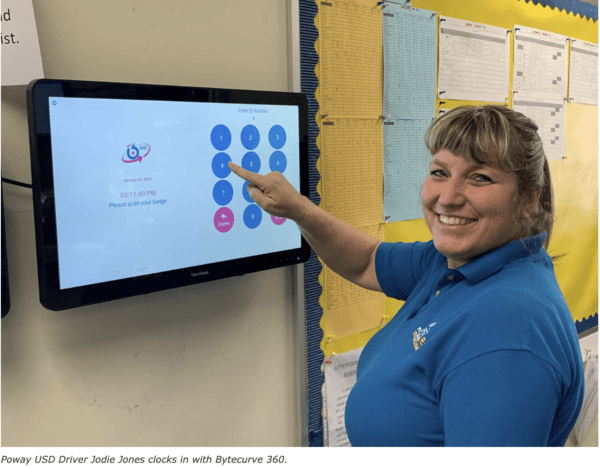
If you are in the market for a school bus driver scheduling software, here’s what to look out for
- The application should feature a user-friendly design to enable administrators, drivers, and parents to understand and navigate the system. It should be cloud-based and be supported by U.S.-based support team who appreciate the unique demanding environment of a school bus fleet.
- The platform should include ongoing and comprehensive training and support for all users to guarantee they’re comfortable with the tool and can use it effectively. Bytecurve features ongoing support from our team of school bus operations experts.
- The school bus driver scheduling software platform you eventually select should commit to continuous updates and maintenance to ensure it remains current and devoid of bugs or glitches. Bytecurve is founded by innovators who will never stop improving the platform based on the needs and wants of their customers and school bus fleet operators.
- The app should be flexible and customizable to tailor it to the unique needs of each school or district. Bytecurve will work with each district or contract to build their tailored solution that meets their unique requirements.
- The software should be capable of integrating with other related tools like student information systems to guarantee accurate and up-to-date data is being used to create and manage driver schedules. Bytecurve has integrations with all of the major routing and GPS fleet tracking solutions so that virtually any school bus fleet can enjoy the benefits of the transformative technology.

Secure
Only authorized employees will be able to access DriveOn based on a customer specific access code. This code can be turned off as needed by an authorized administrator.

User friendly
DriveOn is easy to use with a simple, smart interface.
Available on both iOS and Google Play stores.






